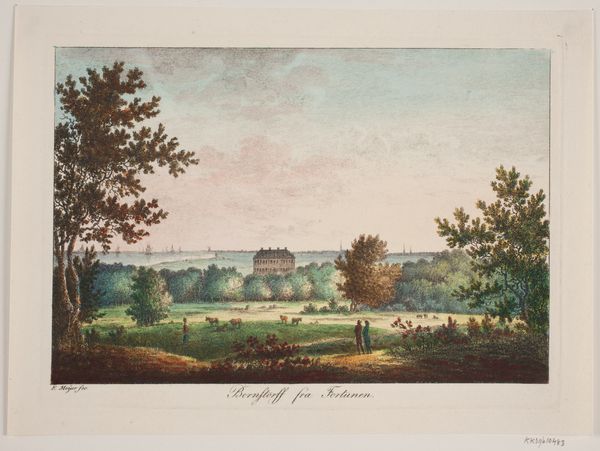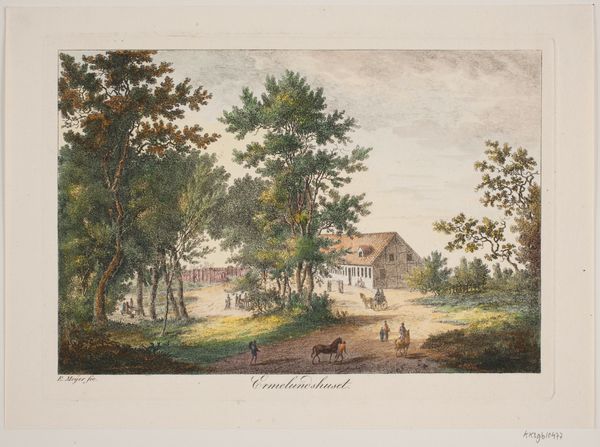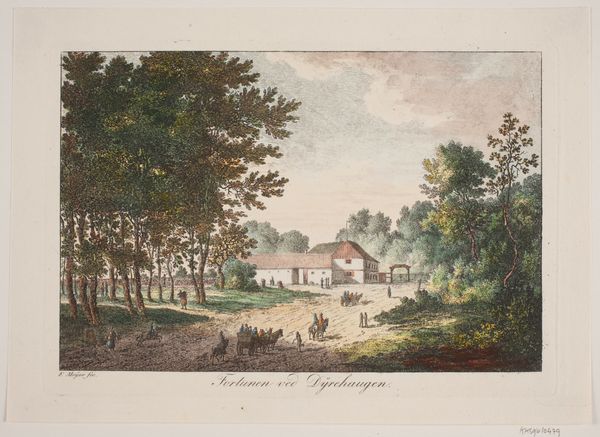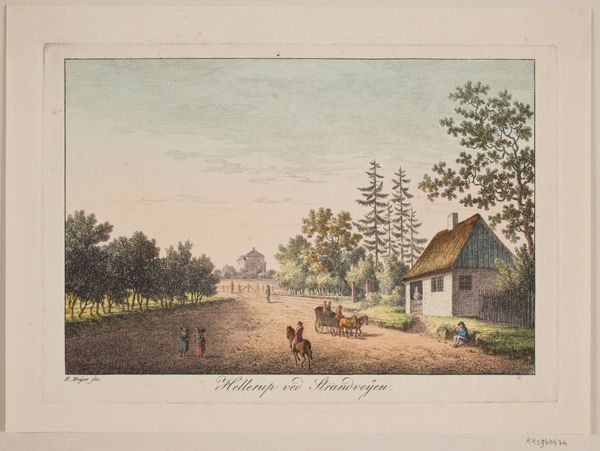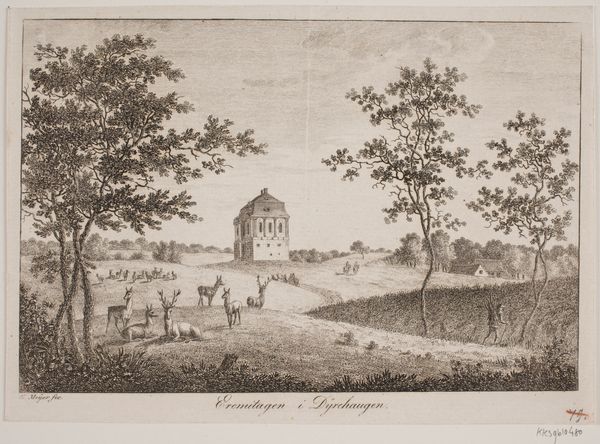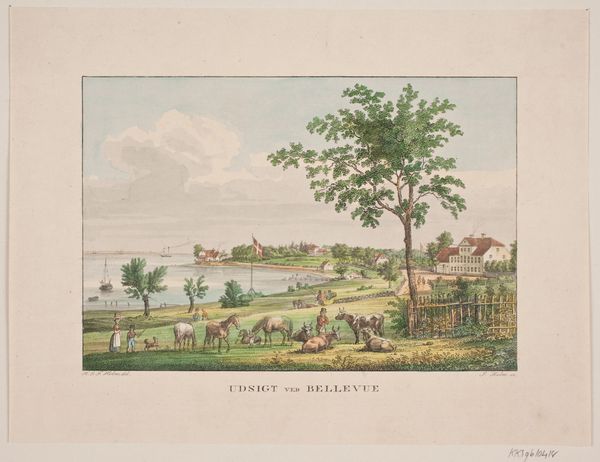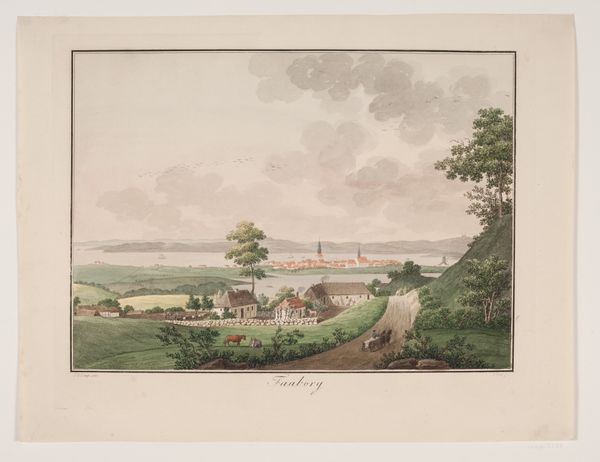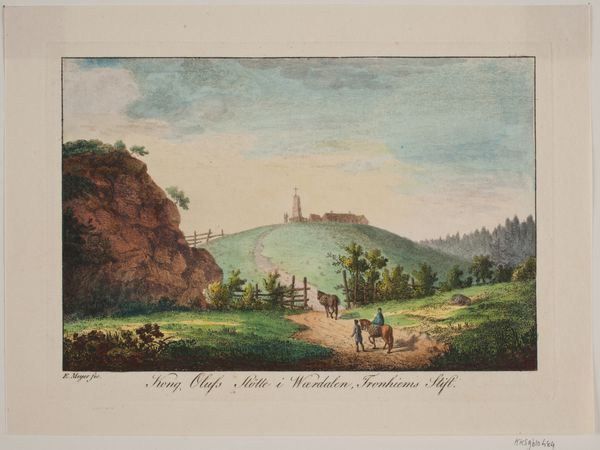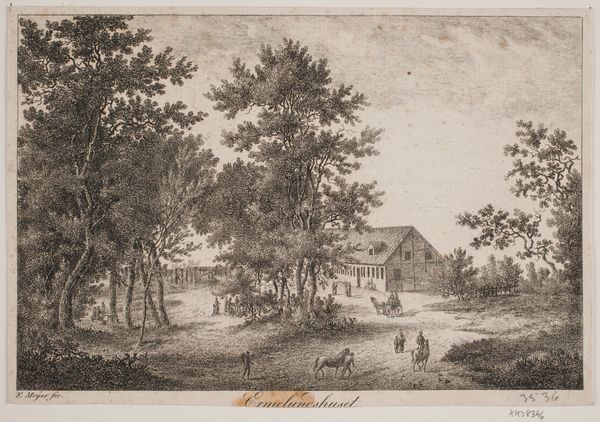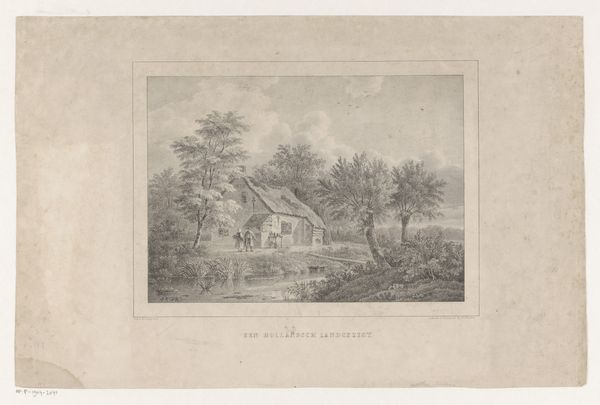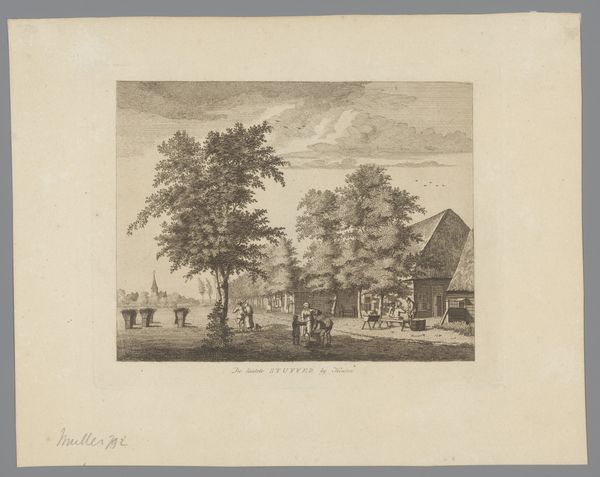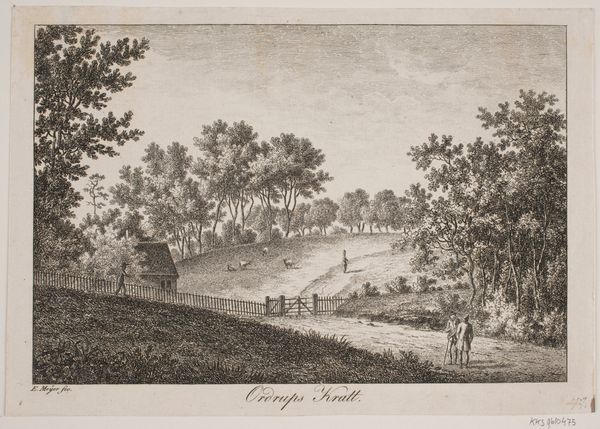
Dimensions: 142 mm (height) x 200 mm (width) (plademaal)
Editor: Here we have "Eremitagen i Dyrehaven," or "The Hermitage in Dyrehaven," created sometime between 1763 and 1809 by Elias Meyer. It looks like a watercolor print, maybe an engraving? It's so charming, with the deer grazing so peacefully in the park. I'm curious about the building in the background. How do you interpret this work? Curator: Well, considering the era, it’s vital to see this image in its socio-political context. The Hermitage was not a place for religious hermits, but a royal hunting lodge. Images like this were instruments of power, subtly showcasing royal control over the land and access to it. This idyllic scene naturalizes the idea that the aristocracy had rights of leisure that others did not. Editor: So it's less about the beautiful landscape, and more about projecting power? Curator: Precisely! The Hermitage was intended as a site for royal banquets after the hunt. This engraving subtly presents the king as the benevolent landowner, while actually signifying a strict control of resources and spaces. Look closely: are there commoners depicted enjoying the park? Editor: No, I only see the deer, and the lodge... Curator: Right, and consider where this image might have been displayed. Not in a peasant's cottage, but in the homes of other nobles, reinforcing those ideas of privilege. Did you also notice that it's more like idealized nature and it almost resembles a theater stage design, which adds to my point? Editor: I see your point. So it’s not just a pretty picture of deer and a building, it’s a statement about the social order! I’ll never look at a landscape the same way. Curator: Exactly. Art never exists in a vacuum, and even seemingly innocent landscapes often carry significant political weight. Understanding that adds a new layer of appreciation to works like this.
Comments
No comments
Be the first to comment and join the conversation on the ultimate creative platform.
